| Content | Rupert Neve Designs' Shelford Channel, over a half century in the making, is the definitive evolution of Mr. Neve's renowned 80 Series channel module technology, updated and refined for the contemporary studio. The Shelford Channel is fitted with Rupert's latest Class A transformer-gain mic preamp, the best-of-the-classics Inductor EQ from the Shelford 5052, a punchy diode-bridge compressor, the alluring analog textures of variable Silk saturation, a state-of-the-art dual-tap transformer output stage with massive headroom, and double the operating voltage of vintage designs. Offering rich tonal options for making audacious statements with your music, along with precision-detented controls for recall, the Shelford Channel delivers the authoritative sonic essence of classic Rupert Neve designs, along with modern versatility.
Input stage and transformer-gain mic pre
Rupert Neve's first new Class A, transformer-gain mic preamplifier in over 40 years makes its debut in the Shelford Channel. Rupert has spec'd this preamp with a direct-coupled transformer input; gain is provided by the custom transformer itself. The proprietary input transformer, and its meticulous integration with the surrounding Class A input amplifiers, plays an outsized role in the Channel's immediately recognizable sonics: punchy and creamy-smooth, with excellent isolation and vanishingly low noise.
The Shelford Channel's front-panel hi-Z instrument input uses the same discrete Class A field-effect transistor with transformer topology as Rupert Neve Designs' acclaimed RNDI; for gain, however, it utilizes the new RN4012 input transformer directly into the mic preamp. This design provides astonishing clarity on hi-Z sources, with substantial low-end weight and silky-smooth high frequencies. The DI also gives you a passive thru output to feed a guitar or bass amp.

- Mic-DI/Line: switches between microphone/direct injection input and line input
- GND Lift: disconnects the audio signal ground from chassis earth
- Signal LED: green indicates Signal Present; red indicates imminent input stage clipping
- Mic Gain: 12-way precision rotary, controls gain from 0dB to 66dB in 6dB steps
- Trim: rotary switch provides further continuous gain adjustment of +/-6dB
- 48V: switch engages phantom power on the mic input
- Phase: inverts the polarity of the signal path (illuminates when engaged)
- HPF Freq: engages a 12dB/octave highpass filter, variable from 20Hz-250Hz
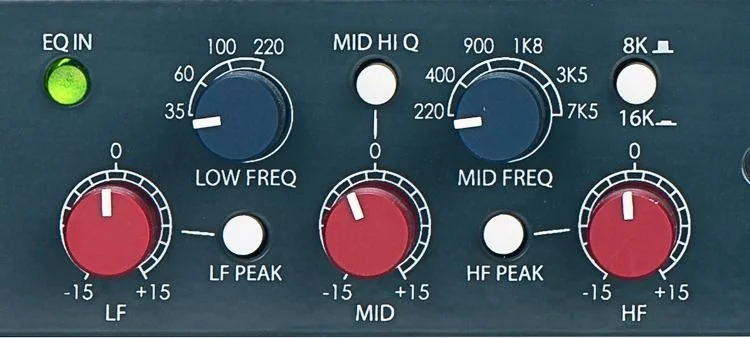
The best-of-the-classics inductor EQ
The Shelford Channel's EQ section is a 3-band, custom-tapped inductor circuit containing Rupert's favorite bands from his vintage equalizer designs. The low-frequency band is primarily based on the 1064 — acclaimed for its creamy, resonant bass. Unlike the 1064, though, the Channel gives you added dimension, punch, and control over your low end by letting you use the LF band as either a peaking or a shelving filter. The midrange band is based on the venerable 1073 and is perfect for sweetening instruments and vocals while nudging them forward in a mix. "Proportional Q" response also makes it ideal for attenuating problem frequencies. The high-frequency band is a hybrid design with the best of vintage and modern attributes. It should be noted that this EQ is in no way a clone; it's a decidedly modern design using components and techniques that simply did not exist in the 1970s — for instance, the use of capacitor-based topologies to achieve sonic richness and enhanced control.
- EQ In: engages all EQ frequency bands except HPF
- LF: adjusts up to 15dB of boost/cut at the selected low frequency
- Low Freq: 4-position rotary switch for selecting LF band corner or center frequency
- LF Peak: selects LF shelving (out) or peaking (in) mode
- Mid Hi Q: selects between a mid-band resonance of 2 (out) or 3.5 (in)
- Mid: adjusts up to 15dB of boost/cut at selected mid frequency
- Mid Freq: 6-position rotary switch selects center frequency of the midband EQ stage
- HF Peak: selects HF shelving (out) or peaking (in) mode
- 8K/16K: selects between an 8kHz (out) or 16kHz (in) center or corner frequency for HF band
- HF: adjusts up to 15dB of boost or cut at selected high frequency
The Super Diode-bridge Compressor
Like the Shelford Channel's inductor EQ and transformer-gain microphone preamp, the diode-bridge compressor/limiter is based on the topologies found in vintage Neve designs such as the 2254. It improves, however, on the early designs by the inclusion of full-wave rectification and a bevy of new control features. Although Rupert's vintage diode-bridge compressors were prized for their warm, punchy response, they were somewhat compromised by imprecise controls, attack-time inflexibility, low headroom, and high noise. The Shelford Channel's Super Diode-bridge Compressor delivers the attitude-packed, "in your face" sound of those classics, but with modern precision and flexibility — which makes it ideal on any source. Full Side-chain and stereo Link features are provided.
- Side Chain Insert Jacks (rear-panel): for fine tuning of compressor operation
- Comp In: engages the Channel's compressor-limiter section
- Threshold: sets level where the compressor "kicks in"
- Ratio: sets compression slope from 1.5:1 (minimal) to 8:1 (heavy)
- SC Insert: inserts rear-panel sidechain insert jacks into sidechain signal path
- HPF to S/C: routes highpass filter into the circuit that compressor uses to determine level
- Gain: for adding make-up gain to compensate for level attenuation lost to compression
- Timing: 6-position rotary adjusts attack/release speed of the compressor
- Link: links the sidechain control of multiple units for ganged or stereo operation
- Pre EQ: changes the order of compressor in the circuit chain
- Blend: mixes the dry and compressed signal for handy parallel compression
- Fast: speeds up both attack and release of the selected compressor time constant
Dual-tap transformer output
The Shelford Channel's output stage serves up the inimitable sound of Rupert Neve's classic designs while providing far more tonal versatility. The dual-tap output for the RN2042 square-core output transformer provides both high- and low-headroom outputs without compromising performance. The high-headroom tap takes advantage of the Shelford's higher-voltage design, delivering a pristine sound without non-linear output-stage coloration at high levels. The low-headroom tap, on the other hand, lets you drive the full voltage range of the Channel to accentuate this non-linear harmonic content — without clipping most pro interfaces. For vocals, drums, guitars, bass, and other instruments, this output lets you hit the transformer's sweet spot, which can inject life into a recorded performance in a way that other effects cannot.
The Silk and Texture controls
The Shelford Channel is packing a secret weapon the classics never had: its output transformer features the Silk Red/Blue and Texture controls from the Portico II Series that let you tailor the harmonic content and tonality of the output stage. By engaging these controls and sufficiently driving your output, you can dial in delectable 2nd- and 3rd-order harmonic distortion (that's the good kind) and saturation of the output transformer, imbuing your tracks with juicy rich thickness (think: 1073 on steroids) — with no danger of overloading the output stage. The Silk Red mode emphasizes harmonic content generated by the source's high frequencies; Blue mode, conversely, works off the low frequencies. The Texture knob controls the amount of added harmonic content. Disengage Silk, and your output is pristine and modern, while retaining Rupert's bigger-than-life transformer sonic signature.
The magical sound of Neve
Rupert Neve is an audio legend whose electronics designs defined the golden age of analog. Those of us at Sweetwater who have had the privilege of working on a Neve 8078 or its predecessors can attest to the fact that Neve's Series 80 consoles were indeed the pinnacle of hand-wired analog mixing desks. Mr. Neve has remained at the forefront of audio-circuit innovation for over half a century, and his current company, Rupert Neve Designs, continues to advance the state of the art with cutting-edge products that sound incredible and intelligently address the challenges of the digital age.
Rupert Neve Designs Shelford Channel Features:
- The definitive evolution of Rupert Neve's renowned 80 Series channel module technology
- A complete channel strip that delivers the essence of classic designs, along with modern versatility
- Input stage and transformer-gain mic pre
- Front-panel hi-Z direct input
- Best-of-the-classics inductor EQ
- Super Diode-bridge Compressor
- Dual-tap transformer output
- Silk and Texture controls
| Whether you’re tracking, mixing, or just listening to music, your headphone amplifier is as important to the final sound quality as your headphones – yet the world is full of headphone amps with compromised sonics, headroom, and power. To address these shortcomings, Rupert and his team at Rupert Neve Designs developed the RNHP.
Based on the headphone output circuit in the 5060 Centerpiece Desktop Mixer, the RNHP is a dedicated 24V reference-quality headphone amplifier with +4dBu balanced line, unbalanced RCA and 3.5mm (1/8”) inputs – each specifically calibrated for optimum level and impedance – and housed in a rugged, VESA-mountable steel chassis.
Dedicated vs Integrated Amplifiers
For much equipment, the headphone output is an afterthought. Most products with integrated headphone amps have large feature sets, small footprints, and relatively low price points. This leads to compromised power and audio quality of the headphone amplifier itself, which can lead to a number of issues in real world usage such as low headroom, unreliable performance, and a lack of focus.
The RNHP was made to accomplish one simple purpose: making any headphones sound their best. As a dedicated design, the RNHP is tailored to deliver extremely high quality, powerful amplification, with precise calibration for any source input. This exceptional level of quality can be the difference that inspires an artist to give their best performance, lets an engineer make better choices in mic and placement, gives a mix engineer reliable translation of EQ and dynamics adjustments, or lets a music listener appreciate the full depth and detail of a recording.
MAXIMUM INPUT LEVELS
- “A” XLR I/P: +22.8 dBu @ 1 kHz
- “B” RCA I/P: +14.7 dBu @ 1 kHz,
- “C” 3.5mm I/P: +3.3 dBu @ 1 kHz
OUTPUT POWER
- As measured with typical headphones, Z=44 Ohm: 3.617 VAC RMS @ 1 kHz = 300mW RMS.
- 16 Ohm typical Load: 1.933 VAC RMS @ 1 kHz = 230mW RMS
- 150 Ohm typical Load: 5.108 VAC RMS @ 1 kHz = 175mW RMS
OUTPUT IMPEDANCE
.08 Ohm @ 1 kHz, 16-150 Ohm load, 0 dBu input
FREQUENCY RESPONSE
+/- .2 dB from 10 Hz to 120 kHz
NOISE
- Measured with typical headphones, Z = 44 Ohm, BW 22 Hz - 22 kHz.
- “A” XLR Input: -101.9 dBV,
- “B” RCA Input: -100.9 dBV
- “C” 3.5mm Input: -88.8 dBV
DIMENSIONS
6.5” wide x 4.6” deep and 1.9” tall
POWER SUPPLY REQUIREMENTS
24VDC @ 0.25Amp (6 watt) minimum. Use with supplied power adapter, as this has been carefully selected for best output power and noise performance. May be used with a properly configured 24V battery as well. | Comprised of a rugged, portable chassis with world-class preamp, compressor and DI circuits as well as two channel operation, Vari-phase, Silk and DI/mic blending capabilities, the Portico 5017 is an innovative and powerful tool for recording or live performance.
FREQUENCY RESPONSE
- Main Output, no load.
- -0.2 dB @ 10 Hz
- -3 dB @ 160 kHz
NOISE
- Measured at Main Output, unweighted, 22 Hz - 22 kHz. Terminated 150 Ohm.
- With gain at unity better than -100 dBu
- With gain at 66 dB better than -62 dBu
- Equivalent Input Noise better than -128 dBu
NOISE FACTOR
1.5 dB
HIGH PASS FILTER
80 Hz, 12 dB/Octave Bessel
MAXIMUM OUTPUT LEVEL
Maximum output from 20 Hz to 40 kHz is +23 dBu
TOTAL HARMONIC DISTORTION AND NOISE
- @ 1 kHz, +20 dBu output: Main Output: Better than 0.001%
- @ 20 Hz, +20 dBu output: Main Output: Better than 0.002%
SILK ENGAGED
Better than 0.2% Second harmonic
COMPRESSOR
THRESHOLD
Continuously Variable from -20 dBu to +10 dBu
RATIO
Fixed at 2:1
ATTACK & RELEASE
- FAST MODE: Attack 40ms , Release 40ms
- SLOW MODE: Attack 100ms , Release 350ms
PHANTOM POWER
+48 Volts DC +/- 1%
POWER REQUIREMENTS
12VDC is optimal voltage, but 9-15VDC is acceptable
CURRENT CONSUMPTION
- @ 9VDC Current is 1.3 A typical: Power = 11.7W
- @ 12VDC Current is 1.0 A typical: Power = 12.0 watts
- @ 15VDC Current is 800 mA typical: Power = 12.0 watts
DIMENSIONS
7.5″ (deep) x 6.5″ (wide) x 2″ (high) | Firmly rooted in six decades of console design experience, the 5057 Orbit gives your mixes the legendary tonality, power, and wide-open soundstage that only Rupert Neve’s class-A analog summing can provide. Coupled with Rupert’s famous custom audio transformers and Silk Red & Blue circuitry for variable harmonic saturation, the Orbit launches sterile in-the-box mixes to new heights of tone, depth and clarity – without compromising the recallable convenience and repeatability of your DAW-based workflow.
When you push a mix buss and output transformers towards saturation, the non-linear, musical harmonics that occur are what truly glue a recording together and bring it to life.
Rather than using an external summing solution that offers little more than an ultra-clean representation of the in-the-box experience, the Orbit provides the extraordinary richness, harmonic complexity and depth that only a Rupert Neve console can bring to your mixes.
The Orbit utilizes a highly custom output transformer configuration originally developed for the acclaimed Shelford Channel, which provides both a Main Output and a -6dB Output – the latter of which enables you to fully drive the Orbit to achieve more transformer harmonics without clipping the next device in the chain. This unique transformer drive is a hallmark of the sound of Rupert Neve throughout the years – and the sound of countless classic hit records.
Classic Sounds on Demand
Every mix demands its own treatment. In addition to the choice of outputs, the continuously variable Texture control with Silk Red and Silk Blue modes gives you complete control over the harmonic density and tonality of your mix – or lets you keep it utterly pristine and uncolored.
The Silk Red mode accentuates transformer saturation in the high and high-mid frequencies to amplify the vibrant midrange harmonics associated with Rupert’s vintage equipment, while Silk Blue accentuates saturation of the lows and low-mids to add thickness and weight to any source – especially useful for “thin-sounding” mixes. Unlike EQ, these Silk & Texture controls saturate the output transformers, and add highly musical harmonics to the source material according to the amount of Texture applied.
Drive the mix buss hard, choose your Silk flavor, and crank the Texture knob for a rich, saturated, vintage vibe – or disengage Silk entirely for clear, wide-open sonic beauty. The choice is yours.
Build your Dream
While the Orbit is an extremely effective tool on its own, multiple units can be combined through the Buss Link for a higher channel count. The 5057 Orbit can also be used as a building block in an expandable summing system utilizing the 5059 Satellite for flexible summing & routing, and the 5060 Centerpiece for additional mixing and monitoring features.
These units create the core of a world-class analog modular console system rivaling any traditional large-scale studio setup.
Channel Separation and Accuracy
With precisely fixed channel levels and accurate mix buss attenuation via high-quality stepped switching, the Orbit’s purist signal path has vanishingly low crosstalk, and channels matched to within +/-0.1dB. This provides your mixes with the widest and most accurate stereo image, the greatest depth, and the most direct signal path, allowing you to hear every single detail of your mixes.
DAW Based Recall without Compromise
Frequent recalls can be a challenge for modern mix engineers. The Orbit’s elegant simplicity and fixed level accuracy provides rapid, repeatable DAW-based recall from mix to mix, while adding the rich, unrivaled sound quality of Mr. Neve’s class-A transformer-coupled mix buss.
INPUT IMPEDANCE
16K Ohm
FREQUENCY RESPONSE
- 10 Hz to 50 kHz: +/- 0.1 dB
- 150 kHz: -3 dB
NOISE
- From 22 Hz - 22 kHz.
- -90 dBu typical
MAXIMUM INPUT LEVEL
@ 1 kHz: +26 dBu
MAXIMUM OUTPUT LEVEL
@ 1 kHz: +26 dBu
THD+N%
- From 22 Hz - 22 kHz.
- 0 dBu @ 1 kHz: 0.003%
- +20 dBu @ 1 kHz: 0.0006%
CROSSTALK
- 1 kHz: -103 dBu
- 10 kHz: -93 dBu
PRODUCT DIMENSIONS
19” W (48.3 cm) x 9” D (22.9 cm) x 1.75” H (4.4 cm)
SHIPPING DIMENSIONS
24” L (61 cm) x 13” W (33 cm) x 4” H (10.2 cm)
SHIPPING WEIGHT
10 lbs (4.5 kg) | Packed with ultra-fast, rock-solid performance, the Behringer S32 32-channel digital snake system bridges the gap between your band, your FOH engineer, and your audience. With the S32, you get 32 remote-controllable Midas-designed preamps and 16 analog, servo-balanced XLR returns at the stage end, and it's all piped through a single, convenient Cat 5e cable, thanks to integrated SuperMac technology from Klark Teknik. In other words: no more bulky analog snake! So step up to the digital age — order your Behringer S32 32-channel digital snake system from Sweetwater today!
AES50 networking capability provides compatibility with many digital mixers
When Behringer first developed their S32 digital snake system, they intended it to go hand-in-hand with their powerful X32 digital mixing system. But limiting such a convenient and affordable digital snake to the X32 alone would have been a shame, which is why Behringer designed it around the strict guidelines established by Klark Teknik. The result is an affordable digital snake that's completely compatible with any digital console that sports an AES50 digital Ethernet connection. So if you're running a Midas or Behringer digital mixing board, if it's got an AES50 Ethernet port on it, if you've got an S32 digital snake, you're never more than a single connection away from your stage box.
Remote-controllable preamps make setup fast, easy, and painless
Even if you try to get a jog in every day, no one likes having to run up to the stage every time you have to make an adjustment to your stage box. Thanks to the Behringer S32 digital snake system's remote-controllable preamp design, those back-and-forth cross-venue dashes are a thing of the past. Using the Klark Teknik SuperMAC protocol, your S32 will show up in your digital mixer's OS, giving you the control you need over your pres, right from the front of house position. And by the way, these preamps are the exact same high-quality Midas-designed preamps found in the X32 console, so you know you're getting quality sound with low noise and tons of headroom.
Total integration with Behringer's P-16 personal monitoring system
Streamlined, affordable, and super-easy-to-use, everyone's raving about Behringer's Powerplay P16 personal monitoring systems. When you add a Behringer S32 digital snake system to your PA rig, you're not just getting a great set of remote-controllable preamps and ditching tons of bulky cable, you're ready to add an advanced personal monitoring system directly inline with the rig you already have. That's because your S32 digital snake comes equipped with Ultranet connectivity, which provides your Powerplay P16-M monitor controllers with a digital split straight from the stage box.
Behringer S32 32-channel Digital Snake System Features:
- Simple, flexible, and affordable digital snake system that works with any AES50 network-ready digital console
- 32 x fully programmable and remote-controllable Midas-designed mic preamps give you exceptional sound, right from the stage
- 16 x analog, servo-balanced XLR outputs let you send complete monitor mixes to the stage
- AES50 network ports featuring Klark Teknik SuperMac technology, providing you with ultra-low latency digital audio that's in-ear compatible
- Up to 328' of networking capability via a single lightweight CAT-5e cable (not included)
- Dual AES50 ports let you cascade multiple S32 units, without a merger or a router
- Precise LED metering plus 7-segment displays let you keep a close eye on your levels
- Ultranet connectivity for Behringer's Powerplay P16 Personal Monitoring System is perfect for In-ear applications
- Dual ADAT outputs for use in splitter mode and stand-alone digital multicore applications
- MIDI In/Out for bi-directional communication between FOH console and on-stage MIDI devices
- USB connector for system updates via PC
- Planet Earth switching power supply for maximum flexibility, noise-free audio, superior transient response plus low power consumption for energy saving
- Durable yet compact, all-steel 3U rack-mount chassis provides flexible mounting
| Working inside the box? Sweetwater would like to recommend a summing mixer that will seriously up your game: the Rupert Neve Designs 5059 Satellite Shelford Edition. If you record and mix entirely within your DAW, you’re hampered by the inability to leverage the sonic advantages of high-quality analog outboard gear. Enter the 5059 Satellite. The 5059 gives you 16 channels — each with individual level and pan, plus insert and bus-2 send buttons. You get two stereo buses with RND’s proprietary Silk Texture controls, giving you effortless integration with outboard equipment, total control for two separate stem mixes, and the facility to dial in harmonic enhancement in two distinct flavors.
It’s a Neve
In serious audio circles, Rupert Neve needs no introduction. Large-format Neve consoles from the 1970s are considered by many to be the pinnacle of analog mixer design. Boasting the same design heritage and sonic perfectionism that went into the boards used to record countless hit records, the 5059 Satellite Summing Mixer graces your tracks with legendary Rupert Neve warmth, punch, and presence. With 16 channels of Rupert Neve designed Class A alchemy and flexible tonal and routing options, the Rupert Neve Designs 5059 Satellite Summing Mixer will take your DAW-based studio’s sound to a whole new level.
Dial in the Silk
The Rupert Neve Designs’ 5059 Satellite Summing Mixer’s continuously variable Texture controls with Silk and Silk+ modes let you fine-tune the harmonic ratio and tonality of each of 5059’s stereo buses. The Silk mode adds sparkle to your tracks by introducing alluringly airy transformer saturation in the high frequencies. Silk+ mode accentuates saturation in the low frequencies, adding density and thickness to the source — particularly desirable when you’ve got a dry, lackluster mix. Distinctly different sounding from equalization, Texture saturates the output transformers, adding sweet, musical even-order harmonics to your source material for authoritative, radio-ready mixes that blast right out of the speakers.
Flexibility: it’s a beautiful thing
The dual stereo outputs of the Rupert Neve Designs 5059 Satellite Summing Mixer are perfect for creating stem mixes, which you can enhance using the 5059’s Silk/Texture controls, then process through bus compressors or other devices via the inserts, finally feeding into the inputs of another mixer or your interface. You can send any input to stereo bus 1 or 2, and create two very different-sounding mixes from the same 16 channels. These are just some examples of the amazing flexibility you’ll enjoy when integrating the 5059 into your recording rig. Smartly attired in classic Shelford livery, the Rupert Neve Designs 5059 Satellite Summing Mixer is housed in a rugged, fan-cooled 2U steel chassis for dependable, no-compromise professional performance year after year, in the studio or on the road.
The legend continues
Rupert Neve’s 80-series consoles had a huge, punchy, and authoritative sound that defined the sound of ’70s rock. From London to New York to Los Angeles and beyond, top studios were installing Neve boards as fast as they could. By 1977, with the introduction of the NECAM automation system, 80-series boards were the main component of the success formula for any recording studio with world-class aspirations. Mr. Neve’s current company, Rupert Neve Designs, continues to advance the state of the art with cutting-edge products that sound incredible and intelligently address the challenges of the digital age. With your Rupert Neve Designs 5059 Satellite Shelford Edition from Sweetwater, the legend continues.
Rupert Neve Designs 5059 Satellite Summing Mixer Shelford Edition Features:
- Classic Neve: Class A, all transformer-balanced, and awesome-sounding
- Zero crossover distortion and unmatched purity
- Custom transformers provide galvanic isolation and serve up "larger than life" sound
- Sets a standard for rackmountable summing mixers
- 16 inputs/channels (with level controls, pans, and inserts); 2 stereo buses
- Send any input to stereo bus 1 or 2, each with variable Silk/Silk+ Texture
- Dual Stereo Outputs let you split the input channels into 2 stems for further processing and mixing
- Stereo buss 1 and 2 each has its own XLR outs
- DB-25 line input, insert send/return connectors
- Rugged 2U fan-cooled chassis, clad in classic Shelford livery
|


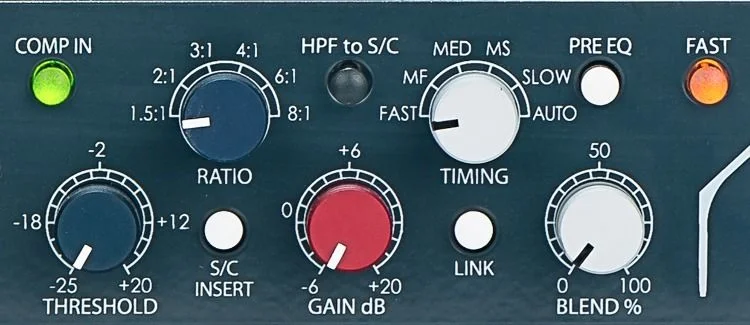




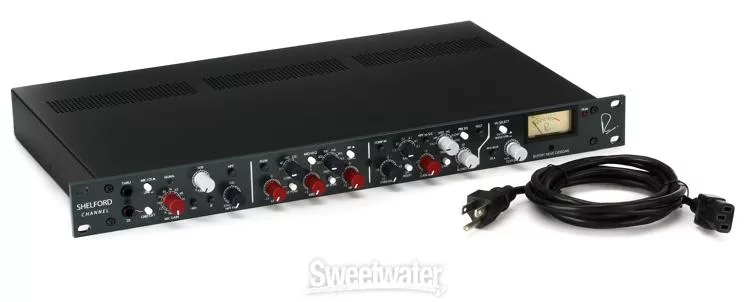










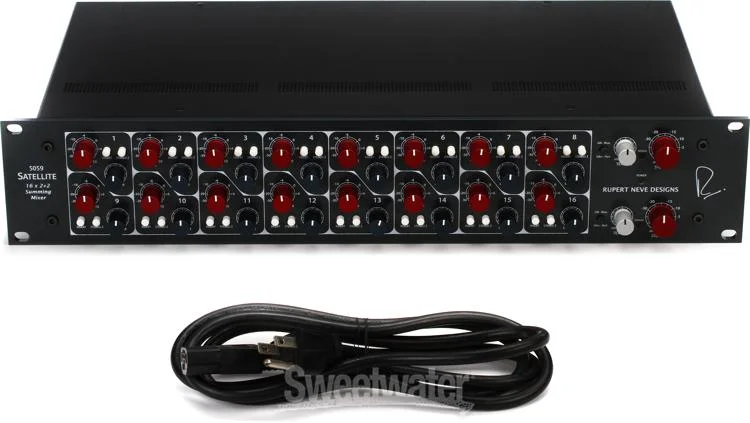


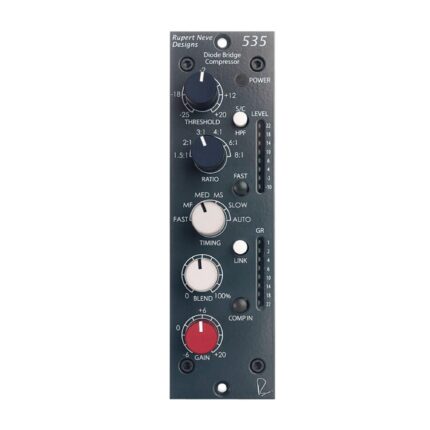







Reviews
There are no reviews yet.